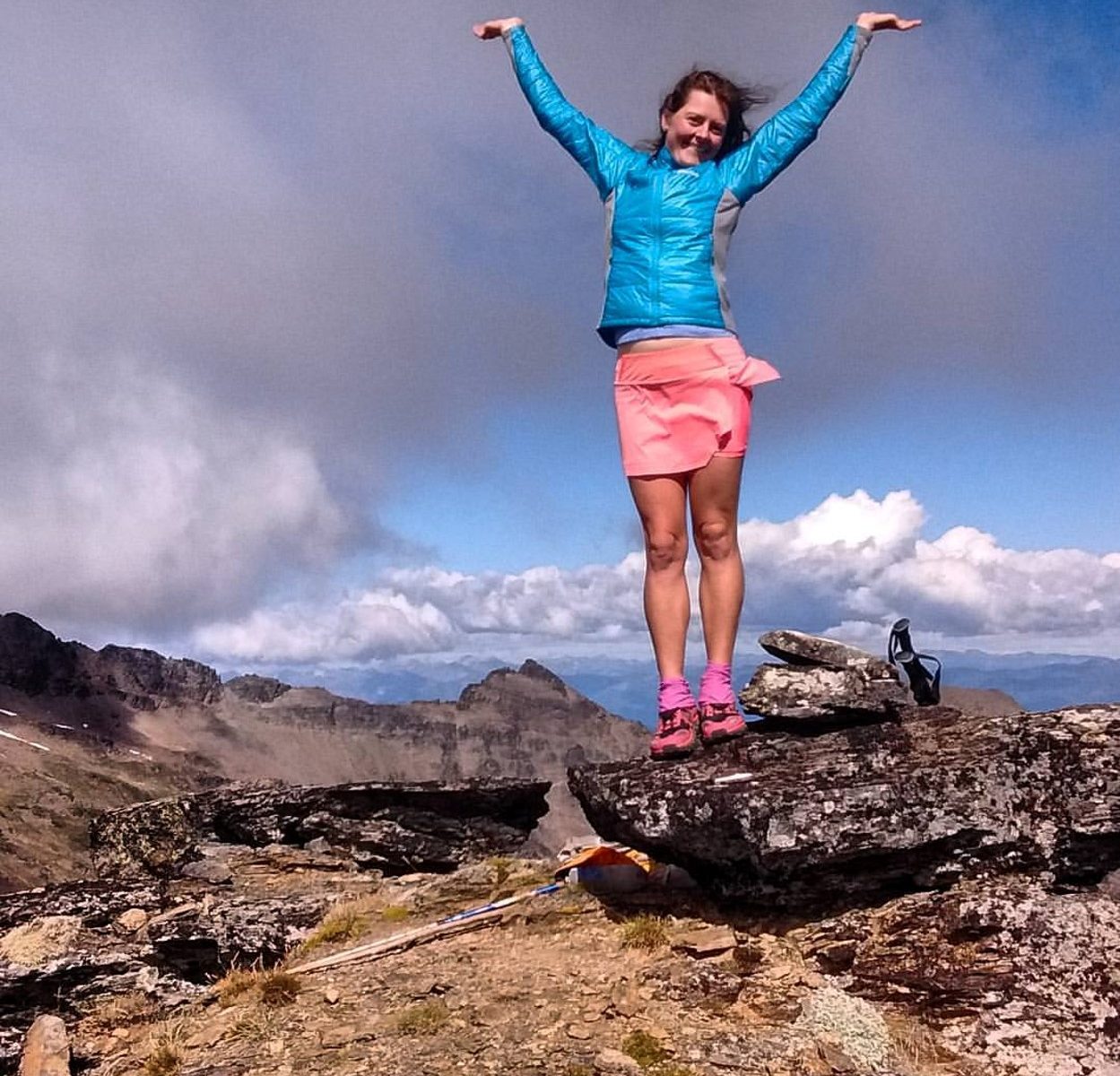by Guest Contributor Heather “Anish” Anderson
An ACE certified personal trainer with over 30,000 backpacking miles, Heather became the first female triple triple crowner and the first female calendar year triple crowner when she hiked the AT, the PCT, and the CDT in one March-November season in 2018. She holds the overall self supported FKT on the PCT and the female FKT on the AT and AZT. She is also an ultra marathoner, peak bagger, and mountaineer working on several ascent lists in the US and abroad. Heather is a speaker, and is author of the book Thirst, which chronicles her PCT record.
It’s that time of year again…where we start reflecting on the past 365 days and making resolutions for the next 365 days. So many of our determinations revolve around health and exercise; including those who plan to do a long-distance backpacking trip as their New Year’s Resolution. But why do we spend so much time resolving to do better in the arena of wellness and often times not end up following through?
I think so often our goals are unreasonable. We want to attain perfection without the work. Or, don’t fully understand the commitment to lifestyle and mindset change that is not temporary. These, along with our deep-seated dissatisfactions with our own selves, are fuel for the “failure fire.” I could write volumes about this, but for this blog I’m going to focus on a few points especially with regard to preparation for a big, physical goal (like a race or long-distance hike) since that’s my specialty as a personal trainer.
First of all, I’ll start with the essential (and shockingly, often not obvious) truth that you need to know and accept: You are capable.
You are capable of achieving your goals. It might take you a longer time or more work than someone else, but you are capable of effecting great change, massive health improvements and finding yourself able to complete things you couldn’t previously. The key is to believe in your ability to improve.
Secondly: Set stepping stone goals.
I’ve worked with a lot of people over the years and the number one reason people drop out of a program is because they’re not seeing the results they expected right away. The truth is you won’t see the end result without long-term work. It’s great to have a big, audacious goal. But once you have it, break down the steps you’ll need to get from where you are to that goal and focus on building from one sub-goal to the next. You’ll stay motivated in your training when you’re seeing the results you expect as you reach each subsidiary benchmark.
Take a cue from long distance hiking: when you start the Appalachian Trail, you’re going to get demoralized thinking about walking 2,193 miles. Or even across 14 states. Think instead about hiking to your campsite each day, or to the next town. These short term, attainable goals feed that sense of accomplishment you need to keep going. One by one, all these mini-goals stack up to make a whole thru-hike. In the same way, looking at your long term goal through the lens of all the mini-goals that make it up and you’ll find a string of successes that builds upon itself.
Third: Realize this is a commitment to life-change, not just means to an end.
It’s fine to make a dietary or physical activity change for short term goals, if that’s what you want. But realize that if you’re serious about becoming healthier, preparing your body to age well, or prepping for a long-term physical goal it will require life change. You’ll be undoing ingrained habits and replacing them with new ones. Chances are you’ll have to start with concreting foundational changes that may seem imperceptible into your routine before moving on. That’s why the first two steps I listed are so crucial. If you set unrealistic goals, or go too hard too soon you’ll burn out. Think of the changes you’re aiming for as a journey, not a destination. Just like you can’t get from Springer Mountain, Georgia (the southern terminus of the Appalachian Trail) to Mount Katahdin, Maine (the northern terminus) in 10 days on foot, you can’t completely overhaul your wellness and exercise habits in a day either.
If you’re looking to make the changes necessary to really prepare you for long term success remember to take it one piece at a time. Set your intention not just for the New Year, but for your life. Begin making changes and focus on cementing one solidly in your foundation before moving on to the next. Start with the goal of 20 minutes of exercise every day. Once you’re successfully doing that without missing days you’re ready to take the next step…toward whatever your long-term goals are. If they include preparing to complete a thru-hike you might consider the Adventure Ready online course that Katie Gerber and I have collaborated on.
To stay in the loop for the next enrollment period for Adventure Ready, and to get on the VIP list for early bird promotions, join the email list here (plus get a free winter wellness guide!).


This post is a guide to anything you want to accomplish in your life! Commitment to goals! Thank you Katie & Anish I think I’ll save your words too motivate myself and others when the motivation just isn’t there. Thank you, Best to you in the new year!
Thanks, Tim!